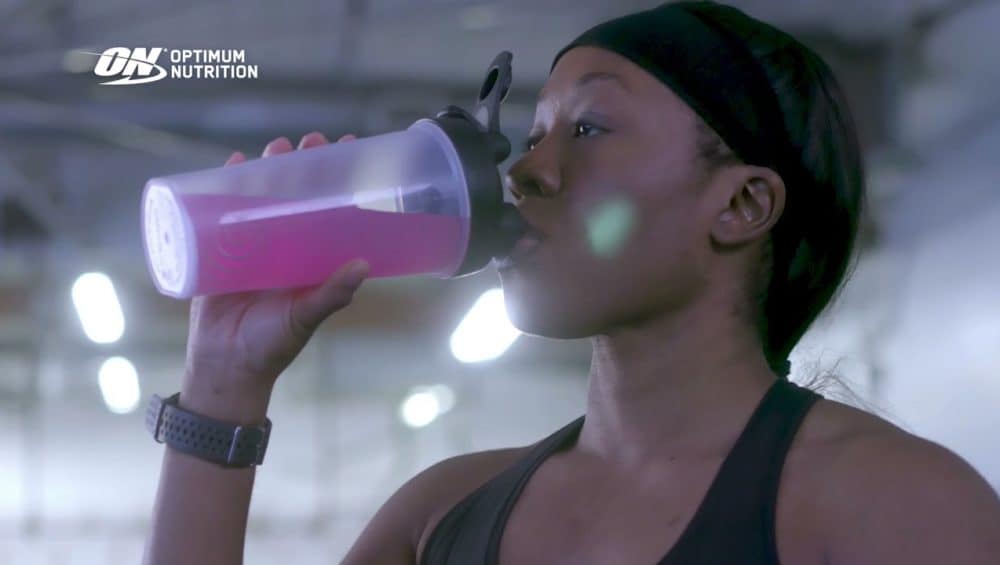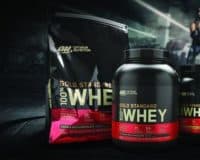Amino acids are well-known to the general public. They are the most important components of proteins. Protein is being used in a variety of ways. You’ve probably heard of whey proteins. Furthermore, you should return to your biology textbooks. Remember how these acids were described as the building blocks of proteins? Furthermore, the majority of today’s athletes are reliant on three main acids. Today, let us learn more about them.
Amino acids are the building blocks of proteins.
Leucine, isoleucine, and valine are the three major amino acids. All of these amino acid configurations are branched. In addition, these acids have a specific structure. You should also be aware of the advantages of taking these supplements. They are as follows:
They aid in muscle development. Leucine promotes muscle protein synthesis. These pills begin to function after a strenuous workout.
Furthermore, they provide endurance. The acids help to balance out the effects of carbs and fats on the body.
They also work by causing a huge amount of fat to be burned. As a result, they are a reliable partner for athletes.
Furthermore, most persons who have taken these have reported feeling less tired and having more energy.
It has also improved the mental health of a large number of people.
Optimum Nutrition BCAA is one of the most popular amino acids on the market. You can eat them if you eat a healthy diet. The powders can be used before or after a vigourous workout. They also aid in the development of lean muscular mass. The BCAA pills are another product that is doing well. You can also take it before or after you workout. Its use can also help to prevent muscle tissue injury. Another strong product, Inspired Aminos, does a lot for the body. It promotes physical fitness both on and off the track. As a result, you can now train more intensely with these amino acids.
Amino acids are amazing substances. You’re almost taken aback when you realise what they do in the body.
They provide the essential foundations of health, such as vitamins and minerals, while also maximising micronutrients and supplying the fuel for development, health, proper body functioning, and genetic transcription. I could easily fill a book if I went on a tirade about amino acids and their myriad functions.
In fact, if I went into detail on the uses of each amino acid separately, I’d have a good novella on my hands. That’s why I’m just going to talk about the ones that have the potential to benefit athletes. That will almost certainly necessitate several pages.
Amino Acids: What Are They?
Protein is made up of amino acids, which are found in diet. When protein is digested, it is broken down into specific amino acids, which are then joined together in different ways for diverse purposes. The majority of solid substance in the body is made up of these newly produced proteins: skin, eyes, heart, intestines, bones, and, of course, muscle.
That’s why knowing what each of these amino acids can do and include more of them in your diet will help you achieve specific goals like muscle growth. Of course, one should not go overboard, because a good protein balance is essential for health and stability; without it, any of the amino acids can become poisonous.
This is a problem that has been raised in the instance of phenylalanine, although it applies to all amino acids. Getting enough vitamins and minerals is vital to counteract potential adverse effects since they ensure correct protein to amino and vice versa conversion.
There are around 20 to 22 standard amino acids, depending on who you ask. Eight to ten of those 20-22 are deemed essential, which means that you must consume a specific quantity of them in order to operate effectively; our bodies cannot manufacture them from other materials, therefore we must obtain them through food.
Because amino acids are the building blocks of protein, I’m sure you get plenty of them, but this article will go over the advantages of supplementing with extra free form amino acids, including what too much or too little of several of them can do, what they do in the body, and how much and when you should use them.
There are roughly 14 non-essential amino acids, as well as a slew of additional metabolites classified as amino acids that are generated from the 8 essential ones, in addition to the 8 essential ones. In addition to the eight necessary amino acids, I’ll try to discuss a few that have lately made headlines: L-Glutamine, L-Arginine, L-Carnitine, L-Cysteine, and HMB are the amino acids L-Glutamine, L-Arginine, L-Carnitine, L-Cysteine, and HMB.
The Eight Crucial Amino Acids
Any bodybuilder should have a basic understanding of the basics and aim to maximise them in their diet.
Only by focusing your protein consumption on these 8 amino acids can you get a full variety of amino acids and optimal health. So, even if you’re not considering augmenting with free forms, have a look at the next eight paragraphs and learn something.
Histidine
Histidine is required for the growth and repair of all types of tissue in the human body. It’s important for the preservation and production of glial nerve cells called oligo-dendrocytes, which form a protective sheath around your neurones called myelin.
This avoids unintentional impulses, which can cause major problems in the brain and spinal cord. Histidine also produces both red and white blood cells, as if it didn’t have enough to do already.
It also aids in the removal of excess heavy metals (such as iron) from the body, as well as radiation protection. It creates gastric juices in the stomach, which may help to speed up and enhance digestion, making it a useful tool in the fight against indigestion and gastro-intestinal illnesses.
It’s a precursor to histamine, a non-essential amino acid produced by the immune system in response to allergic reactions. Recent studies have also connected it to longer orgasms and improved sexual experience, which is good news for those of you who are having difficulties with that.
Bodybuilder Summary
Use To Bodybuilders: Minimal, only in improving digestion
Dosage: Minimum of 1000 mg daily, but the recommendation is 8-10 mg a day per kilogram of bodyweight. Chances are you get at least two or three times that in your diet.
Overdosing: Too much histidine may lead to stress and the aggravation of mental disorders such as anxiety and schizophrenia.
Medical Uses: Used in the treating of arthritis and nerve deafness.
Sources: Found in dairy, meat, poultry, fish as well as rice, wheat and rye.
Deficiency: Unknown.
Uses: Improved digestion — Sources: Dairy, meat, fish, rice, wheat, and rye
Lysine
L-Lysine is one of the most important amino acids for growth and development. It aids calcium absorption in the body, resulting in bone and muscular growth as well as fat mobilisation for energy.
In times of intense stress and weariness, it helps to maintain nitrogen balance and lean body mass. It, like histidine and most essential amino acids, is required for the production of antibodies, hormones (GH, testosterone, insulin, and so on), enzymes, collagen, and the healing of injured tissue.
It not only helps to maintain it, but it also aids in the development of new muscle protein. The maintenance of healthy blood vessels is also one of the cardiovascular benefits.
Summary of Bodybuilders
Lysine’s Benefits to Bodybuilders: In addition to maintaining and producing muscle protein, Lysine helps to revitalise the body to combat exhaustion and overtraining, as well as maintaining a positive nitrogen balance, which helps to create an anabolic environment within the body.
Dosage: The standard dosage is 12 mg per kilo of bodyweight, although daily intake often exceeds that, and even with 1.5 grammes of protein per pound of bodyweight, a few additional mg won’t hurt. It is a crucial amino acid for athletes. However, avoid overdosing.
Overdosing: Increased LDL cholesterol, diarrhoea, and gallstones may occur.
Cold sores and fatigue are treated with this herb.
Cheese, eggs, milk, pork, yeast, potatoes, and lima beans are all good sources.
Deficiency: Enzyme abnormalities, a lack of energy, hair loss (common in protein deficiency), weight loss, a loss of appetite, and a loss of concentration are all symptoms of deficiency.
Cheese, eggs, milk, beef, yeast, potatoes, and lima beans are examples of foods that can help with weariness and overtraining.
Phenylalanine
The amino acid phenylalanine is, or was, a hot topic. Some people tend to have a negative reaction to it, and there has been a lot of backlash regarding it being used in items. Things have settled down, and tests have shown that healthy people are unaffected.
It boosts your mood by stimulating your nervous system, and it could help you stay motivated for whatever reason. It enhances memory and is regarded a smart vitamin (albeit they aren’t vitamins) when combined with its derivative, glutamine.
In the anterior pituitary, it raises epinephrine, norepinephrine, and dopamine levels. All three neurotransmitters are necessary for the nervous system to function properly. It also aids in the absorption of UV rays from sunlight, resulting in a larger level of Vitamin D, a powerful bodily hormone.
As previously noted, its major metabolite, tyrosine, raises dopamine and nor-epinephrine levels. It’s also a producer of glutamine, the amino acid that accounts for the majority of the amino acid pool.
Phenylalanine has a terrible reputation in the media. It’s a non-carbohydrate sweetener found in many soft drinks (when mixed with aspartic acid, it’s known as aspartame), and it recently made news when some said it was harmful to the brain, and then it was connected to a cancer risk.
Phenylalanine at toxic quantities can be fatal, but trust me, so can anything else. You’d be dead if I placed a gun to your head and forced you to drink twenty litres of cleaned water. That’s water, by the way. Consider what vitamins and minerals could accomplish.
Nonetheless, I doubt anyone believes vitamins are a poison sent to earth to harm you. Phenylalanine isn’t either. It’s an important amino acid, and most dietitians will tell you that it’s more likely that you’ll be deficient than that you’ll overdo it.
Toxic levels are 3 to 4 times higher than what you’d get with a 250-300 gram protein diet on a daily basis. So don’t worry about that additional diet Coke.
Summary of Bodybuilders
Phenylalanine is beneficial to bodybuilders because it improves nerve function, which allows for maximum muscle contraction and relaxation. The DL-form is frequently used as an endurance booster. Because of the high amount of toxicity, this is never done on a long-term basis.
Dosage: 14 milligrams per kilo of body weight is recommended. You’ll undoubtedly receive more than that, and I see no reason to increase it. Especially considering the possible adverse effects.
Overdosing: Pregnant women and diabetics should avoid using this supplement. Higher blood pressure, headaches, nausea, heart problems, and nerve damage are all side effects.
Medical Uses: Arthritis and depression treatment.
All dairy products, almonds, avocados, nuts, and seeds are good sources.
Deficiency: Although it is uncommon, it can cause weakness, lethargy, liver damage, and stunted growth.
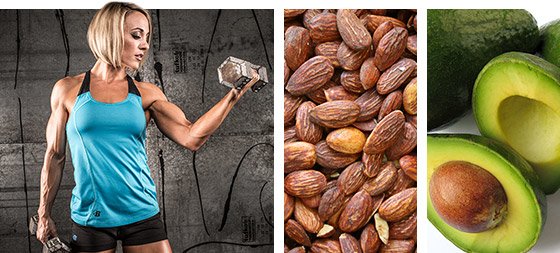
Uses: Allows maximal muscle contraction and relaxation — Sources: Dairy, almonds, avocados, nuts, and seeds
Methionine
I’ll probably bring it up again when we talk about ZMA in a future article, but methionine aids in the breakdown and utilisation of fats, resulting in a higher testosterone rate.
That is how ZMA works in conjunction with zinc. It also removes extra fat from the bloodstream, resulting in decreased adipose (fat) tissue potential. It aids digestion as well as the elimination of heavy metals from the stomach and liver. It’s a good anti-oxidant since it provides plenty of sulphur, neutralises free radicals, and aids memory recall.
It’s a precursor to cysteine, an amino that helps the liver detoxify by producing glutathione. It’s also one of the three amino acids required for the body to produce creatine monohydrate, an important chemical for energy production and muscular building.
Summary of Bodybuilders
Fat metabolization, improved digestion, and anti-oxidizing qualities make this a vital substance for bodybuilders.
12 milligrams per kilogram of bodyweight. If you think it would be beneficial to supplement this, you should get some ZMA. The supplement is more cost-effective and produces better effects than Methionine alone.
Overdosing: None, unless you’re deficient in B vitamins, in which case you’re a prime candidate for arteriosclerosis.
Used in the treatment of depression, arthritis, and liver illness.
Meat, fish, beans, eggs, garlic, lentils, onions, yoghurt, and seeds are all good sources of protein.
Deficiency: Dementia, fatty liver, delayed growth, weakness, skin lesions, and edoema are all symptoms of this deficiency.
BCAAs
Bodybuilders hold branched-chain amino acids in high regard, and rightly so. They are the three most critical amino acids for muscle tissue production, maintenance, and repair. All three work together to provide a powerful synergistic impact.
In terms of anabolics, using alone Valine or Iso-leucine has minimal effect, but both, when dosed correctly, improve the effect of the all-important Leucine. The relative dose is more essential than the overall dose, as it is with some other supplements.
A 2-1-2 balance in Leucine/Iso-leucine/Valine dose is thought to produce the optimum effects. The FDA’s recommendations for taking specific BCAAs are listed below. BCAAs are used in medicine to alleviate protein deficient symptoms such as headaches, dizziness, lethargy, depression, and irritability.
The best method to use BCAAs is to combine them. BCAAs pair well with B-complex vitamins, according to research.
Leucine
Leucine, the most powerful of the BCAAs, is crucial for blood sugar management, tissue growth and repair in skin, bones, and, of course, skeletal muscle.
It’s a powerful Human Growth Hormone potentiator (HGH). It aids in the healing of wounds, the regulation of energy, and the prevention of muscular tissue degradation.
Summary of Bodybuilders
Bodybuilders can benefit from leucine because it is one of the most powerful natural anabolic agents available. However, because you are already consuming a huge amount of it, it will not provide extraordinary outcomes.
16 milligrams per kilogram of bodyweight.
Overdosing: Unknown, but it could raise ammonia levels.
Medical Uses: Preventing muscular atrophy in deprivation situations.
Sources: Brown rice, beans, almonds, and whole wheat are all good sources of this amino acid.
Deficiency: Unknown.
Uses: Natural anabolic agent — Sources: Brown rice, beans, almonds, and whole wheat are all good sources of protein.
Isoleucine
In almost every manner, it resembles leucine. Isoleucine aids muscle repair, controls blood sugar levels, and boosts HGH production. In terms of wound healing, however, isoleucine holds its own.
It aids in the synthesis of haemoglobin as well as blood clots, the body’s principal defence against infection through open wounds.
Summary of Bodybuilders
Bodybuilders should use it in the same way they use leucine. It’s an important ingredient of the BCAA stack.
10-12 milligrams per kilo of bodyweight is the recommended dosage.
Overdosing results in increased urine. There were no major issues. If you have renal or liver issues, this could be dangerous.
Wound healing is one of the medical applications of this plant.
Chicken, cashews, salmon, almonds, eggs, lentils, liver, and beef are all good sources.
Deficiency: Unknown.
It aids muscular rehabilitation. — Chicken, cashews, salmon, almonds, eggs, lentils, liver, and beef are all good sources.
Valine
Valine aids in the repair and growth of muscle tissue, as BCAAs are known to do. It preserves the nitrogen balance and glucose utilisation.
Summary of Bodybuilders
Bodybuilders should use it in conjunction with isoleucine and leucine.
16 milligrams per kilogram of bodyweight.
Overdosing can cause a crawling sensation on the skin, as well as hallucinations, which can be dangerous for persons who have kidney or liver illness.
Medical Applications: None, at least not individually.
Dairy, beef, grain, mushrooms, soy, and peanuts are all good sources.
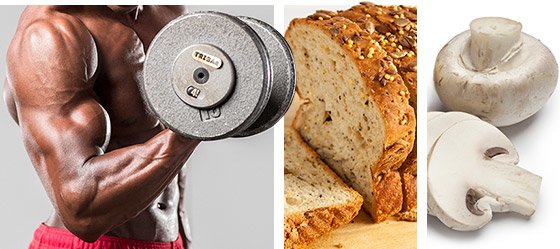
Uses: Promotes repair and growth of muscle tissue — Sources: Dairy, meat, mushrooms, soy, and peanuts
Threonine
An necessary amino acid that can never be produced by the body. Vegans will be disappointed because its main sources are animal (dairy and meat). It’s found in the central nervous system’s heart, skeletal muscle, and nerve tissue.
Threonine (which reminds me of the girl from “Star Trek: Voyager”) is needed to make collagen and elastin, the body’s two most critical binding molecules. Maintaining correct protein balance is also critical.
Threonine is involved in liver function, lipotropic effects (when paired with aspartic acid and methionine), and immune system maintenance by assisting in antibody formation and increasing thymus size and activity.
But probably its most useful virtue is that it aids in the absorption of other nutrients, making threonine-rich protein sources more bio-available than non-threonine-rich protein sources.
Summary of Bodybuilders
Protein absorption, muscle maintenance, and excellent health are all vital to bodybuilders.
Dosage: 8 mg per kilogram of bodyweight, with supplements ranging from 100 to 500 mg.
Overdosing: It is unknown if this is a case of overdosing.
Medical Applications: Treatment for mental illness.
Meat, dairy, and eggs are all good sources of protein.
Deficiency: Irritability and a challenging personality, but nothing serious. There is a reduction in disease resistance.
Protein absorption – Meat, dairy, and eggs are all good sources.
Non-Essential Amino Acids: The Most Important
Apart from BCAAs, I know few people who take extra essential amino acids, simply because every bodybuilder with half a brain is already taking in at least ten to twenty times the suggested FDA amounts, in some cases as much as 40 times.
Non-essential amino acids, on the other hand, are created only when the body requires them and are not as abundant in food as essential amino acids. While humans have plenty of non-essential amino acids, taking in more free form versions may be useful in some cases.
Especially in situations where the body’s reserve is in danger of being consumed for less valuable uses for one cause or another. They’re only meant to be a short-term fix for a short-term problem. However, some would have you believe that because entrenched interests can pay off handsomely, you should always take them.
A good example is glutamine. Weider is the largest supplier of free form L-Glutamine, and FLEX magazine encourages taking enormous doses of it even if you don’t need it. It appears that the fact that Weider owns FLEX hasn’t yet dawned on anyone. However, this is true of all non-essential amino acids. The most popular are listed below.
Glutamine
L-glutamine is a non-essential amino acid found in considerable concentrations in the body. It can make up to 60% of your total amino acid pool at times. It’s sometimes referred to as “brain food” because it quickly goes through the blood-brain barrier.
It has the potential to improve memory recall and attention. It transforms to glutamic acid in the brain, which is necessary for brain function and increases GABA (gamma-amino-butyric-acid, another popular supplemental amino), which is required for mental activity. It’s used in the production of muscle tissue.
We all know that nitrogen is necessary for growth, but too much nitrogen in the body can generate ammonia in the brain. Glutamine aids in the removal of nitrogen by binding to it and creating glutamic acid, which then escorts it out of the body. Glutamine is also one of the most important components of genetic coding.
It is found in a greater number of strands of DNA and RNA than other amino acids. Perhaps most importantly, it decreases lactic acid by balancing the acid/alkaline equilibrium.
It reduces sweet cravings, which can help with weight loss, and a glutamine metabolite called Monosodium Glutamine (MSG), a salt, is utilised as a taste enhancer. It doesn’t have a distinct flavour of its own, but it can be used to enhance the flavour of other foods like meat, fish, and vegetables.
The disadvantage of glutamine is that it is more quickly utilised as a source of energy than other simple carbohydrates. It is a good source of energy throughout the body and one of the prefered fuels of the intestines, for example. As a result, it’s likely that additional glutamine won’t be utilised for the purposes for which it’s supplemented. The body simply does not utilise what it currently possesses.
Is glutamine a dangerous supplement? No. Although it’s one of the best supplements on the market right now, there’s no way you need to supplement with L-glutamine during your bulking period. You should have more than enough.
“In the presence of good health, supplementation is not necessary,” they added, quoting some people who might know (and don’t have a vested interest in the thing). That is a fact, my friends.
A glutamine supplement is not available from any company other than commercial supplement providers. But, as we’ve seen with vanadyl, they’ll make anything if money is involved.
So what’s the point of it? In a dieting phase, you’ll be reducing your carb intake, and if you’re cutting up for a competition, your carb intake will be so low that your body will be forced to use hard-won muscle protein as fuel. And, as I have stated, glutamine is most tissues’ prefered fuel.
If you want to keep that hard-won muscle, supplementing with more Glutamine is a good idea. It is, in fact, required in this situation. I’m a big fan of it, and I use it on a regular basis Without depleting the balance of the body’s amino acid supply, 15-25 grammes can be supplied and burnt.
Some recommend taking two dosages, but as a competitor, I can assure you that taking more will give you more benefit. I prefer 5 5-7 gramme dosages, however this is a personal preference, not a recommendation. It’s important to remember that it’s not cheap.
This is the supplement paradox: one minute it’s completely useless and a waste of money, and the next it’s a crucial instrument for success. Despite the negative press I’ve given glutamine, it’s a powerful substance. It’s possible that it’ll be a good investment.
I simply believe it is more necessary to persuade you of its overuse rather than its advantages; there are plenty of companies that will sell you on that.
Summary of Bodybuilding
Use by Bodybuilders: Maintaining muscle mass and providing an alternative energy source in glucose-depleted circumstances (diets and such).
Don’t go crazy with the dosage. Bodybuilders on low-carb diets for shows may go as high as 30-35 grammes to achieve an effect.
Overdosing is only problematic for persons who have problems with their liver or kidneys.
Uses in medicine
All high-protein foods have a lot of it.
Deficiency: Unknown; glutamine is the body’s most produced protein.
— Sources: Large levels in all high-protein foods — Uses: Alternative energy source during dieting phase —
Arginine
For the time being, L-Arginine is the most popular amino acid. Many supplements include arginine because of its remarkable ability to retain nitrogen. One of the most important ingredients in muscle protein synthesis, as you are all know, is nitrogen.
While certain plants can absorb nitrogen, we mammals must rely on the nitrogen we produce ourselves. Protanines and histones, two proteins associated with nucleic acids, contain the majority of arginine (like DNA and RNA). Because it is difficult to manufacture enough at a young age, its primary application has been to stimulate new growth in neonates.
It strengthens the immune system and increases the size and activity of the thymus gland (which produces the well-known “T-cells”), making it an excellent choice for anyone suffering from a health problem, such as persons healing from an accident or HIV patients.
Release of insulin from the pancreas and a significant increase in the production of GH from the anterior pituitary are two of the hormonal release qualities. However, the metabolite arginine pyroglutamate is prefered for GH because it crosses the blood-brain barrier more quickly.
It’s frequently associated with sexual stimulation, with the idea that it might help orgasms last longer and better. It’s found in seminal fluid, and it’s been touted as a treatment for sterility and utilised in trials to improve male sexual health.
Environmental estrogens are extremely useful in today’s world, and steroid users searching for a post-cycle boost should not disregard it. It may help decrease cholesterol and promote the health of the liver, skin, and connective tissues.
However, because it keeps fat alive in the system and consumes it, it mostly aids muscle mass increase while restricting fat storage. It’s crucial when it comes to losing weight.
Summary of Bodybuilding
Bodybuilders Use: There are just too many to mention. I’m sure you’ll see that if you read the preceding.
Dosage: There is no dosage that is advised. I’m not sure if anyone makes free-form arginine, but if two goods are otherwise identical but one has more arginine, the decision should be obvious. Large dosages of supplementation may cause negative effects, but arginine-fortified protein powders and weight-gainers are a good idea.
Overdosing causes thickness and coarsening of the skin, as well as weakness, diarrhoea, nausea, and a loss of virus immunity. As a result, it is not a good idea for those suffering from viral infections.
Medical applications include the treatment of sexual dysfunction and the treatment of high cholesterol levels.
Whole grains, nuts & seeds, rice, chocolate, raisins, and soy are all good sources of protein.
Impaired insulin production and hair loss are two symptoms of a deficiency. However, in healthy persons, it is quite rare.
Because arginine and lysine compete for absorption, they should not be taken together.
Uses: Helps you grow muscle mass and keep fat off your body. — Whole wheat, almonds, seeds, rice, chocolate, raisins, and soy are some of the foods that can be found in this recipe.
Carnitine
Carnitine is one of the most well-known amino acids. However, it isn’t actually an amino acid! Only because of a structural resemblance is it classified as such.
“Vitamin BT” is a frequent name for it. D-carnitine, DL-carnitine, L-carnitine, and Acetyl-L-carnitine are the four types of carnitine available (ALC). Bodybuilders may only benefit from the last two.
Thiamin (Vitamin B1) and pyridoxine (Vitamin B6) levels in the blood might cause methionine and lysine to produce carnitine. It is not involved in protein formation, unlike the majority of amino acids, which is why we ingest so much of it.
Instead, long-chain fatty acids are transported using it. These fatty acids must enter and exit a cell, and it also eliminates short-chain organic acids from the mitochondria to free mitochondrial coenzyme.
Because appropriate use of carnitine may lead to a drop in body fat percentage and increased energy, these characteristics have gotten it a lot of media attention in bodybuilding circles.
Carnitine may also help to avoid fatty acid buildup in the heart, liver, and muscles, which can be harmful to one’s health. Carnitine is beneficial in any circumstance since it boosts Vitamin C and E’s anti-oxidant properties.
The non-essential amino acid carnitine is the only one that should be considered for long-term use. It could be a valuable tool for folks who need to keep in shape all year. However, because much of it is found in protein-dense foods, I don’t see the need to use it on a regular basis.
I would only recommend carnitine to competitive bodybuilders when they are dieting, because the leaning out effect may impair the anabolic environment and thus muscle growth, but for those of you who make a living as a model or a guest poser, it could be your number one supplement for staying lean all year.
If you’re taking carnitine supplements, it’s best to determine your consumption based on your lean bodyweight rather than the conventional guidelines.
Summary of Bodybuilding
Increased ATP, improved synthetic glucocorticoid reception, and reduced fat formation surrounding the muscle are all benefits that bodybuilders can enjoy.
Dosage: It appears that a dosage of 20-200 mg is the most effective.
Carnitine requirements are determined by muscle mass, hence more muscle means more carnitine requirements.
Overdosing has been linked to diarrhoea and fish odour syndrome in people who take more than 3000 mg.
Reducing the risk of diabetics having impaired fat metabolism.
Fish, poultry, red meat, and milk are all good sources of omega-3 fatty acids. Vegetables don’t have it.
Only those with a carnitine transport defect suffer from a deficiency.
Fish, poultry, red meat, and milk are good sources of ATP.
Cysteine
L-Cysteine is a sulfur-containing non-essential amino acid that has become a popular anti-oxidant. It’s connected to Cystine, which is made up of two bonded Cysteine molecules.
When given the opportunity, Cysteine quickly changes to Cystine. It isn’t a real issue because the body can readily convert it back to Cysteine if it is required. It is necessary for maintaining good skin, body detoxification (because to the sulphur concentration), and collagen formation (used for skin elasticity and texture).
As a result, beta-keratin is where it’s most commonly found. (Keratin molecules are the building blocks of hair, nails, and skin.) Keratin is a protein found in skin tissue that is often generated and preserved.)
Cysteine’s importance as a crucial component of life is demonstrated here. Taurine is a component of glutathione, and it is made by this company. Glutathione, in turn, protects the brain and liver against harm caused by drugs, alcohol, and other potentially dangerous chemicals.
Many creatine supplements now contain taurine, although no one appears to know what effect it has. Most likely to get the most out of Lipoic acid, however I’m not sure how effective that is.
It improves the stomach and intestines’ protective linings, preventing harm from foreign substances (Which is why it is hard to get the most out of pills and medicin). However, it is an excellent liver protectant.
Furthermore, cysteine is required for the metabolism of a number of other bodybuilding-related substances, such as coenzyme A, heparin, biotin (B-vitamin), and the lauded alpha lipoic acid. Methionine is used to produce it.
Bodybuilder Summary
Use To Bodybuilders: Metabolizer of B-vitamins, detoxification of damage due to other supplements, and potentiating insulin.
Dosage: 200-300 mg, two to three times daily.
Overdosing: Only possible in diabetics.
Medical Uses: Liver-protecting and easing of debilitating diseases.
Sources: Poultry, wheat, broccoli, eggs, garlic, onion, and peppers.
Deficiency: Unknown.
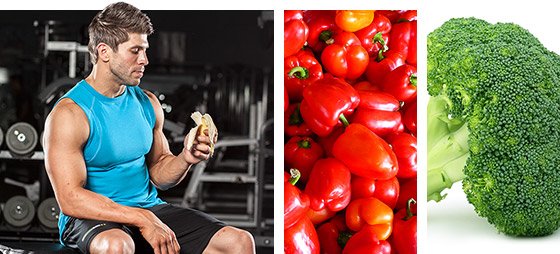
Uses: Metabolizer of B-vitamins — Sources: Poultry, wheat, broccoli, eggs, garlic, onion, and peppers
HMB
Beta-Hydroxy To carry out some of its tasks more specifically, beta-Methyl Butyrate (HMB) is produced from the important branched chain amino acid leucine.
HMB aids muscle synthesis by boosting the pace at which protein is utilised, resulting in reduced fat storage of these molecules and helping to maintain muscle mass.
The more effectively protein is utilised, the less muscle protein is used as an alternative fuel source in glucose-depleted situations.
It not only improves the utilisation of free amino acids in the body, but it also reduces the utilisation of engaged amino acids by reducing protein breakdown. The integrity and strength of the cell lining (membrane) prevents the protein stored in the cell from being utilised for other purposes.
It is estimated that humans can manufacture up to 1 gramme of sugar every day in our bodies. As a result, those wishing to supplement will need to take far higher amounts. Regarding HMB supplementation, I have my own opinions. I must admit, I thought it was a waste of money the first time I used it.
More research has now established that HMB is a worthwhile supplement, but at the doses required to have significant effects, it is prohibitively expensive. Quality HMB has become more affordable, but with the current expense of separating amino acids, I’m not sure they’ll ever be cost-effective.
HMB could save your life if you’re on a diet. It may help you achieve your goals faster by preserving muscle protein, metabolising fat, and enhancing the usage of free aminos as energy. Carnitine and glutamine, on the other hand, are in the same boat.
You have the final say on how you choose to spend your money. But, unless you’re hoping to win a prise, I doubt your pocketbook will appreciate you bringing them all along with your fat-burning machine.
However, if HMB is your thing, pay attention to the dosages. HMB should be consumed in as many portions as feasible for best benefit. 6 servings is fine, 8 serves is better, and so on, but if you’re forgetful, 3 servings will suffice.
When on a diet (I wouldn’t advocate HMB as a good supplement in any other case), total intake for a training day should be 4.5 to 6 grammes, depending on sex and age, and on non-training days 2.5 to 3 grammes should enough.
Maintain use on non-training days because muscle loss is a time-consuming process that ignores your schedule. Increase the dosage with lean body weight once more.
Summary of Bodybuilders
Bodybuilders’ Benefits: Prevents muscle loss and fat storage during glucose shortage.
Dosage ranges from 2.5 to 6 grammes per day.
Overdosing: Unknown; to far, no one has been able to afford an overdose.
There are no medical applications for this product.
Sources: Trace levels can be found in a variety of foods. Catfish, grapefruit, and alfalfa contain the most.
Deficiency: Only in the event of a leucine deficit; otherwise, uncertain.
Prevents muscle wasting and fat buildup. — Catfish, grapefruit, and alfalfa are among of the sources.
Conclusion
That should give you a good idea of which amino acids are the most popular in bodybuilding nowadays. Congratulations if you have made it this far! My day is good as long as you learned something.
Keep in mind that the demand for amino acids, or protein in general, increases with bodyweight, with the conventional calculation remaining 1 to 1.5 grammes of protein per pound of bodyweight, so keep that in mind while supplementing with free form aminos. The more you require, the bigger you are.
Individual free form amino acids, with the exception of BCAAs, should not be supplemented unless you’re overtraining or dieting. The majority of them offer muscle-sparing, energetic, and motivating characteristics that are beneficial in certain circumstances.
However, as I outlined in my first post, a balanced diet eliminates the need for any and all individual amino acids. Nonetheless, they continue to be an important and healthy part of our industry. The last word on amino acids has yet to be pronounced.
They have yet to unveil many of their secrets, and new studies in the next millennium will undoubtedly astound us once more. But, at the end of the day, isn’t it just the same old story: scientists are discovering what bodybuilders have known instinctively for decades?
Now they’re attempting to sell our discoveries in as many different bottles as possible. But, in the end, it’s all about the protein. It is what you begin with and what you finish with.
Next time, I’m planning a story on the ever-present Growth Hormone (HGH) and how to boost it through exercise, sleep, diet, and supplementation. It should be an educational, thought-provoking, and, most importantly, a considerably shorter experience.
In the meantime, remember to lift hard in both the kitchen and the gym. Iron addicts, beware!

